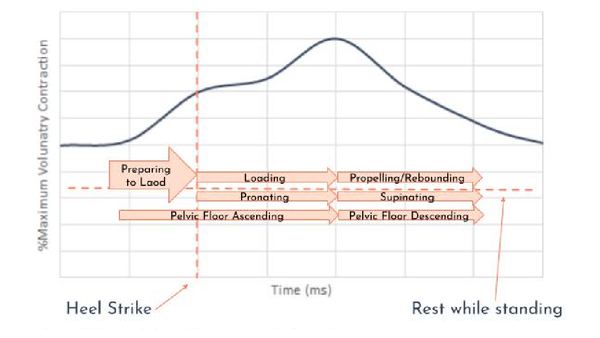
Glutes And Pelvic Floor, How to Load Better, Improve Rotation, Run with Less Pain
Jul 05, 2023In running all the parts are connected.
I can’t tell you how many times I’ve had a runner come to me saying they still have pelvic floor symptoms, despite being told their pelvic floor is strong.
That was me for so long! I did all the breath work and pelvic floor strengthening, but still had symptoms, especially at the end of a hard track workout. If you aren’t having pelvic floor symptoms, we can have the exact same conversation about being able to effectively load your glutes, which I know so many female runners struggle with as well. Glutes and pelvic floor - it’s all connected. With myself and many runners looking elsewhere in the chain, the key usually lies.
In my Glute Accelerator Crash Course we progress daily through my favorite, yet simple, glute exercises that will have you really feeling your glutes work by finding that length. You'll go from heavy and clunky to strong, fluid, and powerful in your stride.
Again, it’s all connected.
Your hips and glutes are the next places we generally look (especially how well you are internally rotating and loading), but what about your feet?
In gait, the following go together:
Loading
Pronation
Internal Rotation
Anterior (front) Pelvic Floor Contraction
and...
Propelling
Supination
External Rotation
Anterior (front) Pelvic Floor Relaxation

I always recommend seeing a pelvic health physical therapist FIRST, of course, but find learning about this connection fascinating and incredibly helpful (for myself and many of my athletes). Pelvic floor strength is only part of the equation when it comes to function.
In other words, kegels ain't it!
Looking down at my feet was the key to entirely eliminating my pelvic floor symptoms with running (and truly feeling my glutes work too!)

Can we think about this while we are running? Heck no, it happens too fast. We have to let it happen naturally. Part of that contraction begins before the heel strike (anticipatory) because of how we are rotating through the pelvis and counter-rotating through the torso (a topic for another day). Peak contraction happens after impact (reacting to the stimulus). I believe the foot to be an integral part of that natural contraction.
Again, it has to happen naturally.
But, we can train the connection outside of running with some intentional exercise, like this flow here.
We dig into the foot connection in all my courses, because I believe it to be THAT important!
Our bodies are woven together in harmony- when we experience Glutes And Pelvic Floor pain this is an indication that parts of our bodies are not working together. Being vigilant in your form and training can show you what you need to work on and get you closer to your next goal! Keep running ladies!
Next on your reading list:
Ribs, Feet and Pelvic Floor: How to Understand Running Mechanics and Boost your Performance
No More Panacke Butt! Glutes Workout at Home for Stability and Power
Stretch or Strengthen! What Hip Flexor Exercises Should You Do?
Don't miss a thing!
Join my newsletter, be the first to know about what's coming up, and get even more great content!

